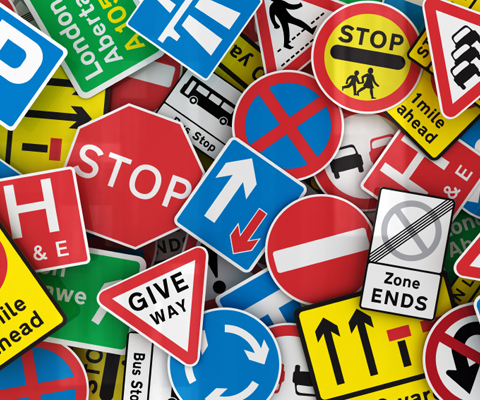Being confident on speed limits for different roadway types can ensure safe driving and reduce the danger of getting a fine, charge or disqualification.
HOW DO I KNOW THE SPEED LIMITS WHEN DRIVING?
Whilst it is really beneficial and essential to become familiar with the speed limits for certain types of roadways, it can be hard to make a judgement when driving on an unknown road.
To figure out the speed limit, search for a number displayed within a red circle indication. Minimum speed limitation signs also occur, although a lot more rarely, these are suggested by a blue circle indication with a white number. These are in some cases seen in tunnels as stationary or slow-moving traffic can actually be thought about a traffic and pollution hazard to the free-flowing traffic in the tunnel.
In general terms, when driving within built-up areas, a speed limit of 30 miles per hour will use unless roadway indications suggest otherwise. This is due to the increased likelihood of threats on these roads such as children and more-vulnerable individuals and cyclists. You require to be vigilant on these roadways. Maintaining the suitable speed and having quick reactions to risks will assist minimise the threat of danger on these roadways.
Depending on the dominating road indications, you can drive to a maximum of 70 miles per hour on these roads. When driving on freeways, significant roadways designed for high speed travel and long distances, you must not go beyond 70 miles per hour.
NATIONAL SPEED LIMIT APPLIES, WHAT IS THIS?
If you see an indication that states, ‘national speed limit applies’ or additionally, a white circle with a black diagonal line through it, this implies you can travel up to the limit speed limit for that road, e.g. dual carriageways and motorwats as much as 70 miles per hour.
Some things to keep in mind:
A speed limitation of 30 miles per hour applies to all single carriageway and dual carriageway roads with street lights, unless there are indications advising otherwise.
When driving at faster speeds, it ends up being more difficult to stop rapidly. As you increase your speed, make sure that you increase your stopping distance in between yourself and the car in front of you. Constantly be vigilant of possible risks which may trigger you to stop suddenly.
Speed limits might vary if varying circumstances happen for instance, towing a trailer or a caravan and driving a motorhome over 3.0 tonnes. For more information about how speed limits can differ based on the vehicle you’re driving click on this link.
WHAT HAPPENS IF I SPEED?
Speeding is a very major offence which could result in a fine, charge points or disqualification. If you are captured speeding the minimum result is a ₤ 100 fine and 3 charge points. More major offenses are where disqualification may happen. You may likewise be provided a speed awareness course which will avoid fixed charge points being applied to your licence, however you will still need to pay the fine. The speed awareness course is a theory-based workshop aimed at assisting those who have sped understand the reasons for their speeding and minimize the likelihood of it occurring once again in the future. It is necessary to be conscious that under the New Drivers Act, drivers that get 6 or more penalty points within two years of passing their test have their license withdrawed.
Having a mutual understanding of speed limits and the kind of roadways to which they use will make your driving experience much easier. It is necessary to end up being acquainted with them for both your theory and practical test. Who wants to invest time and cash discovering how to drive simply to risk it for an extra 5mph.

